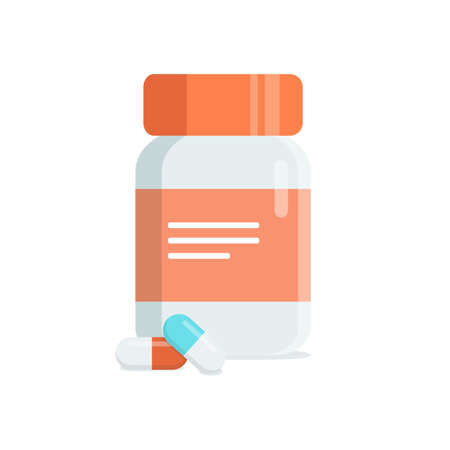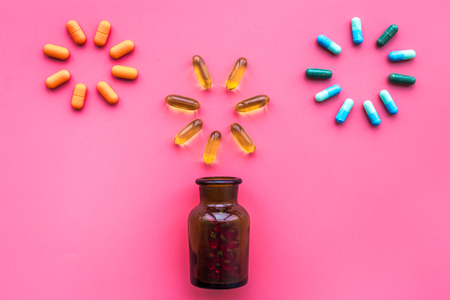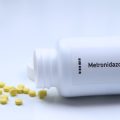1. Understanding the Hair Growth Cycle
Before we dive into how aging affects hair and how supplements might help, it’s important to get the basics of how hair actually grows. Believe it or not, your hair isn’t just sitting there—it’s going through a cycle that repeats itself over and over. Let’s break down what this cycle looks like in simple terms.
The Phases of Hair Growth
| Phase | What Happens | How Long It Lasts |
|---|---|---|
| Anagen (Growth Phase) | This is when your hair is actively growing. Most of the hair on your head is in this phase right now. | 2-7 years |
| Catagen (Transition Phase) | This is a short “break” where growth stops and the hair gets ready to shed. | 2-3 weeks |
| Telogen (Resting Phase) | The old hair rests while new hair starts to form underneath. | 3-4 months |
| Exogen (Shedding Phase) | The old hair falls out so the new one can take its place. Losing 50-100 hairs a day is totally normal. | A few days to weeks |
What Does a Healthy Hair Cycle Look Like?
In a healthy hair cycle, most of your hairs are in the anagen (growth) phase, which means they’re actively getting longer and stronger. Only a small percentage are resting or falling out at any given time. This balance keeps your hair looking full and healthy, even though you naturally lose some strands every day.
Everyday Example:
Think of your hair like a garden. Some plants (hairs) are growing tall, some are taking a break, and some are ready to be pulled up so new ones can grow. As long as more are growing than falling out, your “garden” stays lush.
2. How Aging Impacts Hair Growth
Aging is something we all experience, and it’s no secret that our hair changes as the years go by. You might notice your once-thick ponytail feeling thinner, or those tight curls from your twenties turning into softer waves. Let’s break down how aging naturally affects hair thickness, texture, and growth in ways that really hit home for many Americans.
Thinning Hair: More Than Just Genetics
Many people start to see their hair thin out in their 40s and 50s. It’s not just about genetics—your body produces less of the hormones that keep hair strong and thick. For example, Sarah, a busy mom in Ohio, noticed her part widening after turning 45. She found more hair in her brush and less volume overall. This story is common across America: with age, each hair follicle shrinks a bit, producing finer strands.
Changes in Texture: From Smooth to Coarse (or Vice Versa)
Ever wondered why your hair doesn’t “behave” like it used to? As you age, your scalp produces less oil, making hair feel drier or even frizzier. Men often notice their hair becoming wiry, while women may find their once-silky strands turning rough or limp. Someone who spent years straightening frizzy hair might suddenly find it lying flat and lifeless around menopause.
Common Hair Changes with Age
| Age Range | Typical Change | Real-Life Example |
|---|---|---|
| 30s-40s | Slight thinning, subtle change in texture | Noticeable when styling; takes longer to achieve volume |
| 50s-60s | More pronounced thinning, gray hairs appear, dryness increases | Hair dyes needed more often; scalp feels drier during winter months |
| 70+ | Significant thinning, fragile strands, slower regrowth after shedding | Ponytails look much smaller; hair breaks easily when brushed |
Slower Hair Growth: Why It Happens
If you’ve ever wondered why your haircut seems to last longer than it used to—it’s because your hair grows more slowly as you age. The natural growth cycle shortens, meaning hair spends less time actively growing and more time resting before falling out. For someone like Mike in Texas, this meant his usual summer buzz cut took months longer to grow back compared to his college days.
The American Experience: Everyday Impact
Aging impacts everyone differently based on lifestyle factors like diet, stress levels, and even where you live (think humidity vs. dry heat). But nearly every American adult will relate to seeing more stray hairs on the pillow or noticing a difference in how their favorite baseball cap fits over time.

3. Common Concerns: What Changes You Might Notice
If you’ve ever looked in the mirror and wondered why your hair isn’t as thick or vibrant as it used to be, you’re definitely not alone. As we age, our hair changes—and sometimes those changes can feel pretty frustrating. Here’s a breakdown of the most common signs of aging hair that many people notice, all from a real-world, consumer perspective:
Typical Signs of Aging Hair
| Sign | What It Looks Like | How It Feels |
|---|---|---|
| Thinning | Hair looks less full, scalp may become more visible, ponytails get skinnier. | You might feel self-conscious, worried about styling options, or anxious about shedding. |
| Graying | Individual hairs start turning gray or white, sometimes in patches or streaks. | This can make you feel older than you are or just frustrated with having to color your roots more often. |
| Slower Regrowth | It takes longer for hair to grow back after a cut or shedding, and baby hairs seem scarce. | You may get impatient waiting for bangs or layers to grow out, or stressed if your hairline looks thinner than before. |
| Brittleness & Dryness | Strands break easily, split ends show up faster, and hair feels rough instead of silky. | Brushing gets trickier, and you might avoid heat styling or certain products out of fear of more damage. |
| Loss of Shine | Your hair looks dull or flat instead of glossy and lively. | You may find yourself using extra serums or masks just to get that healthy look again. |
Why Do These Changes Happen?
Aging affects our hormones and slows down cell turnover—this means hair follicles don’t produce new hairs as quickly or efficiently as they used to. Collagen production drops too, making each strand weaker and more prone to breakage. Environmental factors like sun exposure, stress, chemical treatments, and even nutrition also play a big role in how our hair ages.
What Most People Experience Day-to-Day
From needing to clean out the shower drain more often (yikes!) to seeing more grays pop up at the roots between salon visits, these changes are super common. For many Americans, it’s not just about looks—it can impact confidence and self-esteem too. That’s why so many folks start looking into supplements and other ways to support healthier hair as they get older.
4. Lifestyle Factors that Accelerate Hair Aging
When it comes to aging and hair health, its not just about genetics or the passing of time. The way we live every day—especially in the fast-paced American lifestyle—can really speed up hair aging and make issues like thinning, dryness, and breakage worse. Lets break down how stress, diet, and our environment play a role.
Stress: The Modern American Struggle
If youve ever noticed more hair on your pillow after a tough week at work or during a stressful family situation, youre not alone. Chronic stress triggers hormone changes (like increased cortisol), which can push hair follicles into a resting phase. This means more shedding and less new growth. Its not just big life events—even daily hustle, deadlines, or financial worries can add up over time and impact your scalp health.
Diet: You Are What You Eat
American diets often lean toward convenience foods—think fast food, processed snacks, and sugary drinks. Unfortunately, these are low in nutrients essential for healthy hair. Key vitamins like biotin, zinc, iron, and vitamins A, C, D, and E all help keep hair strong as you age. Missing out on these can lead to weaker strands and slower growth.
| Nutrient | Role in Hair Health | Common Sources |
|---|---|---|
| Biotin | Supports keratin production for stronger hair | Eggs, nuts, whole grains |
| Zinc | Aids tissue growth and repair | Beef, beans, pumpkin seeds |
| Iron | Helps carry oxygen to hair follicles | Red meat, spinach, lentils |
| Vitamin D | Stimulates hair follicle growth cycle | Sunlight, fortified milk, salmon |
Environmental Factors: Living in Urban America
City living has its perks—but also comes with unique challenges for your hair. Air pollution from traffic or factories can clog scalp pores and weaken follicles. Hard water (common in many U.S. cities) may leave mineral buildup on your scalp. Plus, air conditioning and heating systems dry out both the air and your strands.
Don’t Forget Sun Exposure!
The American love for outdoor activities is great for well-being but exposes your hair to UV rays that damage proteins in each strand. Over time, this leads to color fading (even if you don’t dye your hair), brittleness, and split ends.
Lifestyle Quick Tips for Healthier Hair:
- Tame Stress: Try meditation apps or take regular walks outside.
- Balance Your Diet: Add more fresh veggies and lean proteins to meals.
- Protect from Pollution: Wear hats or use leave-in conditioners with antioxidants.
- Limit Sun Damage: Use UV-protection sprays or cover up when outside for long periods.
Tackling these lifestyle factors doesn’t have to be overwhelming—small changes can make a big difference in how your hair looks and feels as you age.
5. How Supplements Can Support Healthier Hair
Aging naturally slows down hair growth and changes the texture and fullness of your hair. Many people in the US turn to supplements to help support healthier, stronger hair as they get older. Let’s take a closer look at some of the most popular ingredients and what real users have experienced.
Popular Hair Health Supplements in the US
| Supplement | Main Ingredient(s) | Common Benefits | Real Customer Feedback |
|---|---|---|---|
| Biotin | B Vitamin (B7) | Supports hair strength and growth; may reduce shedding | “My nails and hair feel stronger after 3 months. Not a miracle, but I see less breakage.” – Susan, 52 |
| Collagen | Hydrolyzed collagen peptides | Helps with hair thickness, moisture, and scalp health | “My stylist noticed my hair looks fuller since I started collagen powder daily.” – Mark, 47 |
| Saw Palmetto | Saw palmetto berry extract | May block DHT (a hormone linked to hair loss) | “Saw palmetto helped slow my thinning at the crown. Took about 6 weeks to notice.” – Linda, 59 |
| Multivitamins for Hair, Skin & Nails | Blend of vitamins (A, C, E), biotin, zinc, etc. | Overall support for hair health, especially if diet is lacking nutrients | “Easy way to fill in nutritional gaps. My hair seems shinier and less brittle.” – Dave, 61 |
| Omega-3 Fatty Acids | Fish oil or plant-based omegas (ALA, DHA, EPA) | Supports scalp health and reduces dryness/flakiness | “Helped with my itchy scalp and made my hair softer over time.” – Kelly, 45 |
What to Expect When Trying Hair Supplements
- Consistency is key: Most people see results after at least two or three months of daily use.
- No instant miracles: Supplements can help support healthier growth but probably won’t regrow lost hair overnight.
- Quality matters: Look for reputable brands that are transparent about their ingredient sourcing and testing.
Tips from Real Users:
- “Track your progress with photos every month—small changes add up!” – Jenna, 50
- “Pairing supplements with a gentle shampoo made a big difference for me.” – Mike, 56
A Quick Note:
If you’re dealing with sudden or severe hair loss, it’s always a good idea to check in with your doctor first. While supplements can help support overall hair health as we age, other factors like hormones or medical conditions might also play a role.
6. Choosing the Right Supplement for You
If you’re starting to notice changes in your hair as you age, it’s totally normal to wonder which hair supplement might actually help. With so many options out there, picking the right one can feel overwhelming. Here’s what you should keep in mind as a smart, informed consumer in the U.S. market.
What to Look for in Hair Supplements
Not all hair supplements are created equal. Some are packed with high-quality nutrients that support healthy hair growth, while others just use flashy marketing. Here are some key ingredients and factors to consider:
| Ingredient | Why It Matters |
|---|---|
| Biotin | Supports keratin production, which is essential for strong hair |
| Collagen | May help improve hair strength and elasticity |
| Vitamin D | Low levels are linked to hair thinning |
| Zinc | Helps maintain a healthy scalp and supports hair repair |
| Saw Palmetto | Sometimes used to address hormone-related hair loss |
| Iron | Vital for healthy red blood cells that carry oxygen to hair follicles |
Advice on US-Regulated Products
Supplements sold in the U.S. aren’t regulated as strictly as medications, but there are still ways to shop smarter. Look for these signs of trustworthiness:
- Third-party testing: Check if the product has been tested by an independent lab (like NSF or USP).
- Clear labeling: Ingredients should be listed clearly, with no hidden “proprietary blends.”
- Made in the USA: This often means stricter manufacturing standards.
- No outrageous claims: Be wary of brands promising instant results or miracle cures.
- Consult your doctor: Especially if you have any health conditions or take medication.
The Importance of Realistic Expectations
If you read honest reviews from real users, you’ll see a common theme: patience and consistency matter. Most people don’t see dramatic changes overnight—in fact, it can take several months before you notice fuller or thicker hair. And remember, everyone’s body responds differently based on genetics, age, and lifestyle.
If a supplement has mostly positive feedback but also some mixed reviews about slow progress or minor side effects (like stomach upset), that’s actually a good sign—it means the company isn’t filtering out less-than-perfect experiences. Trust products with transparent customer feedback over those with nothing but glowing praise.
The bottom line? Choose a supplement with proven ingredients, made by a reputable brand, and go in with realistic expectations based on what everyday people really experience—not just what marketing claims promise.


